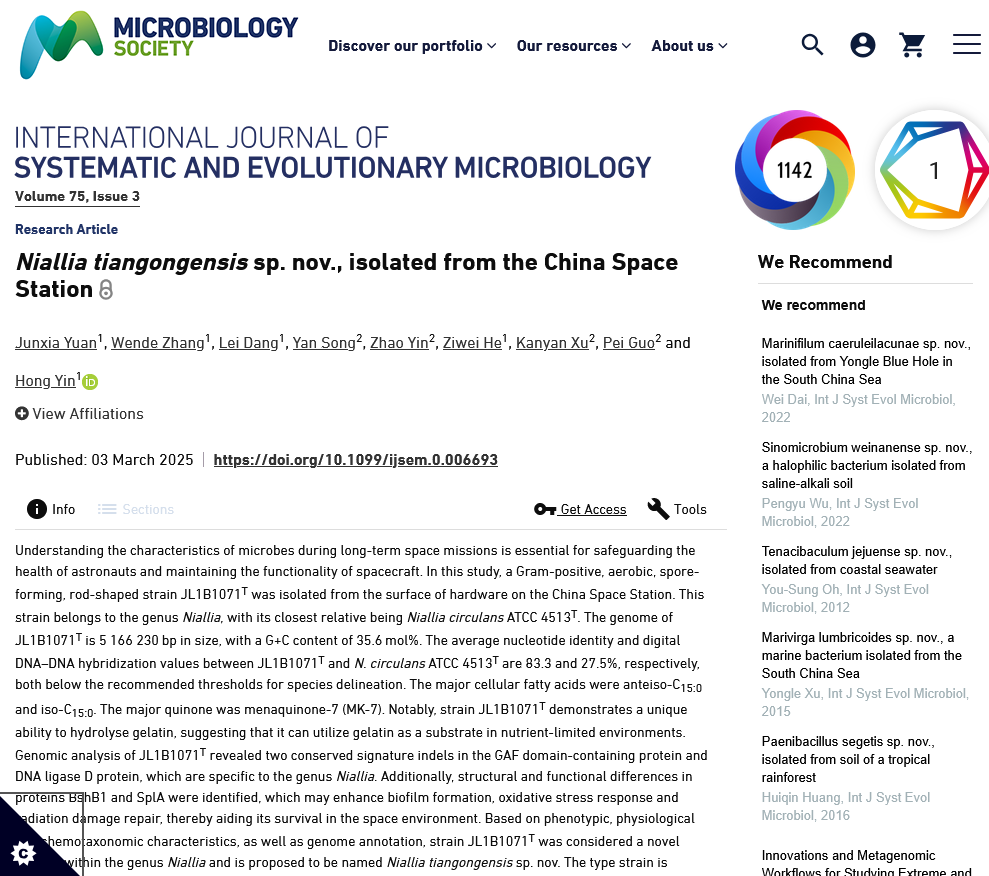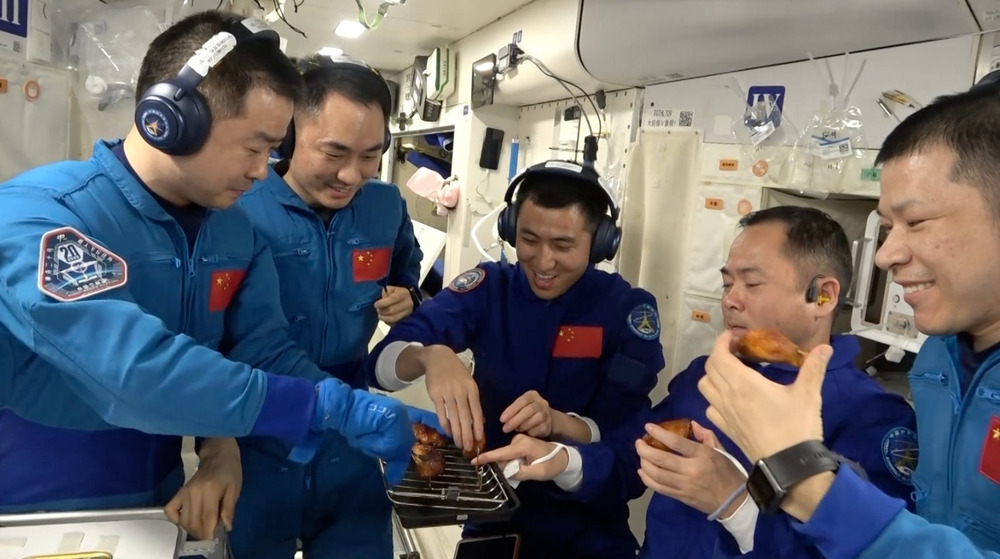disclaimer this is from few month ago
Hey Check It Out Another CHINA Bioweapon Laboratory Ready To Nuke From Space

Niallia tiangongensis sp. nov., isolated from the China Space Station
Understanding the characteristics of microbes during long-term space missions is essential for safeguarding the health of astronauts and maintaining the functionality of spacecraft. In this study, a Gram-positive, aerobic, spore-forming, rod-shaped strain JL1B1071T was isolated from the surface of hardware on the China Space Station. This strain belongs to the genus Niallia, with its closest relative being Niallia circulans ATCC 4513T. The genome of JL1B1071T is 5 166 230 bp in size, with a G+C content of 35.6 mol%. The average nucleotide identity and digital DNA–DNA hybridization values between JL1B1071T and N. circulans ATCC 4513T are 83.3 and 27.5%, respectively, both below the recommended thresholds for species delineation. The major cellular fatty acids were anteiso-C15:0 and iso-C15:0. The major quinone was menaquinone-7 (MK-7). Notably, strain JL1B1071T demonstrates a unique ability to hydrolyse gelatin, suggesting that it can utilize gelatin as a substrate in nutrient-limited environments. Genomic analysis of JL1B1071T revealed two conserved signature indels in the GAF domain-containing protein and DNA ligase D protein, which are specific to the genus Niallia. Additionally, structural and functional differences in proteins BshB1 and SplA were identified, which may enhance biofilm formation, oxidative stress response and radiation damage repair, thereby aiding its survival in the space environment. Based on phenotypic, physiological and chemotaxonomic characteristics, as well as genome annotation, strain JL1B1071T was considered a novel species within the genus Niallia and is proposed to be named Niallia tiangongensis sp. nov. The type strain is JL1B1071T (=GDMCC 1.4642=KCTC 43715).


